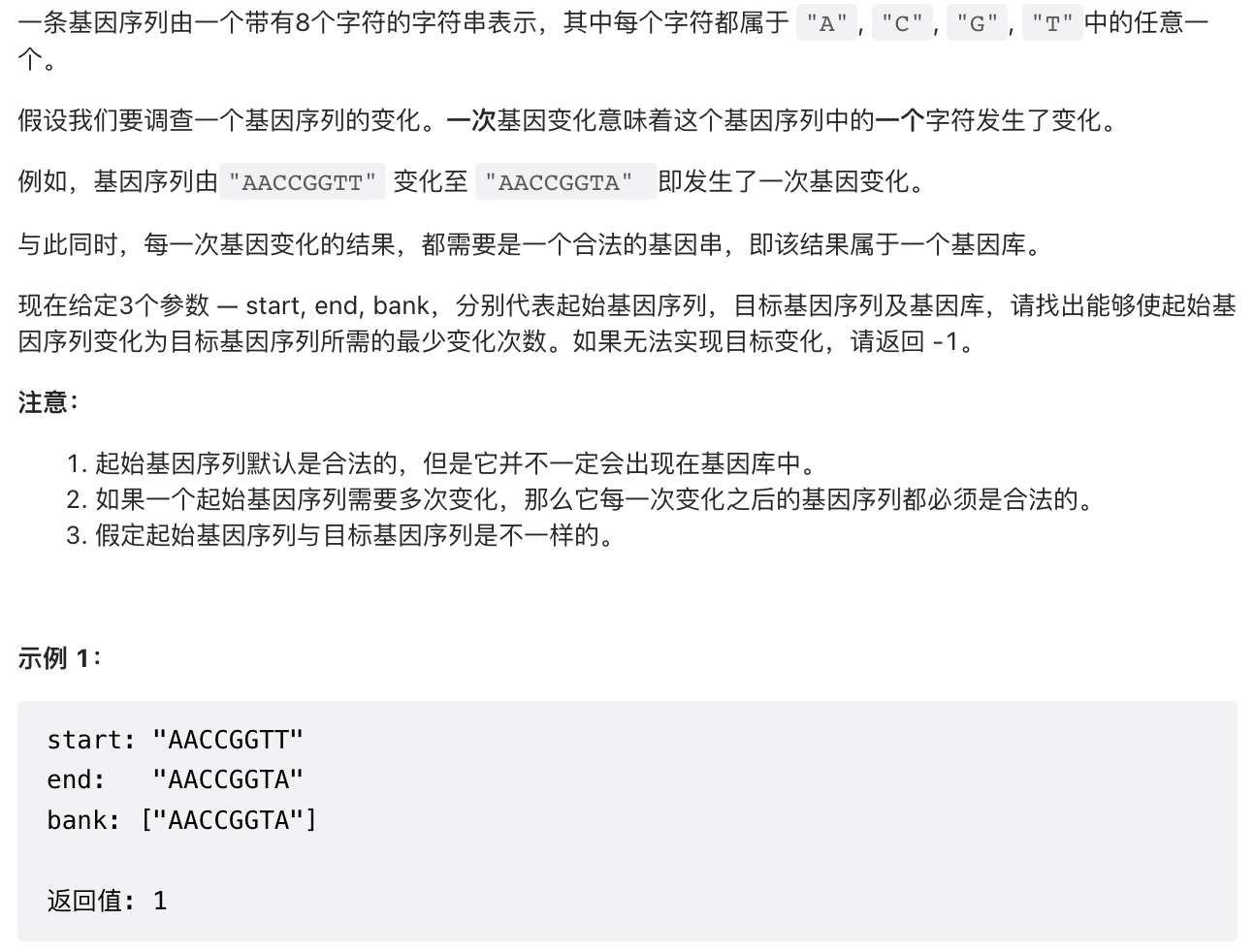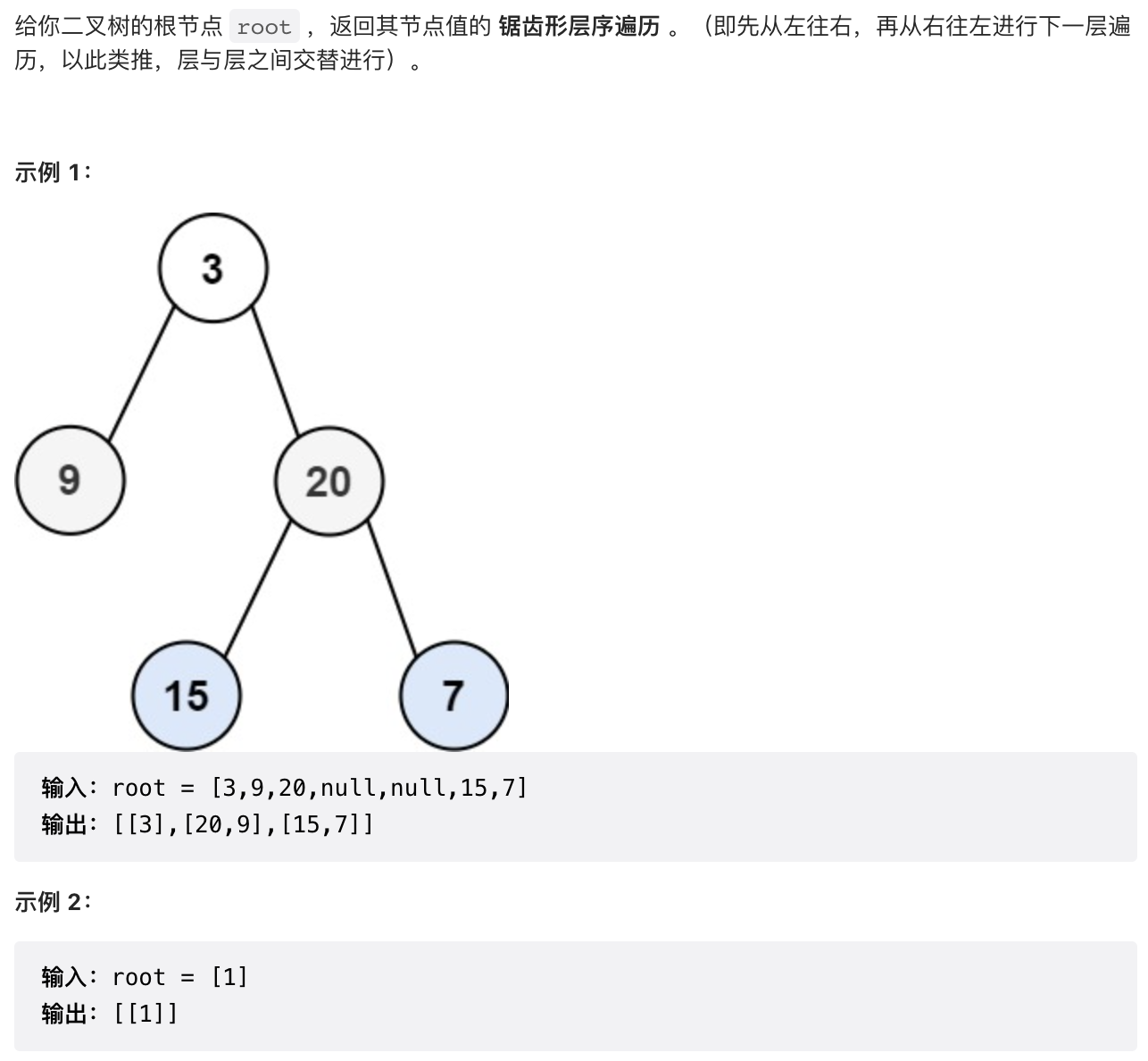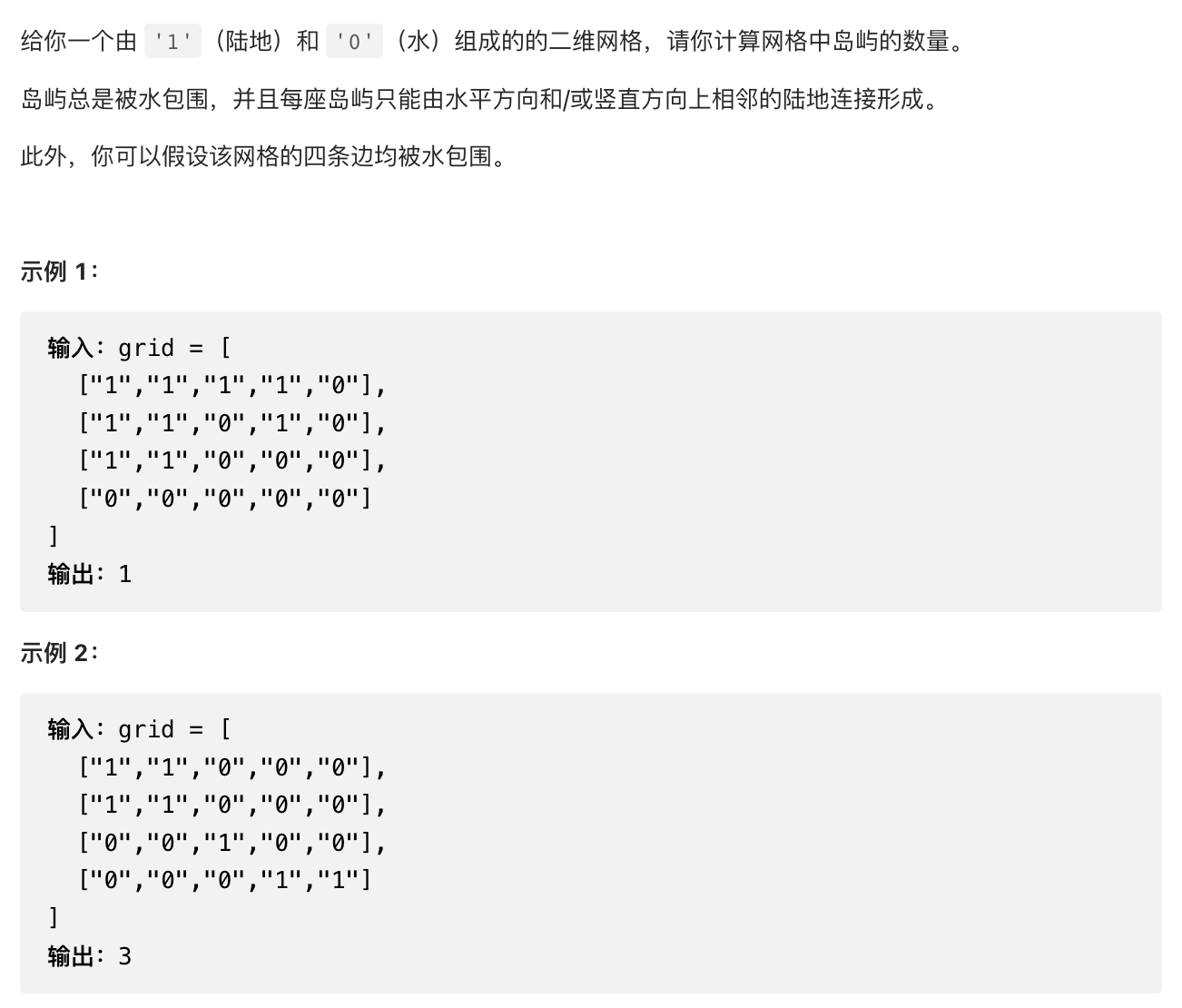1.DFS
1.1 【中等】最小基因变化(433)

/*** 其实还是回溯法*/public class MinMutation {int minStepCount = Integer.MAX_VALUE;public int minMutation(String start, String end, String[] bank) {dfs(new HashSet<>(), 0, start, end, bank);return (minStepCount == Integer.MAX_VALUE) ? -1 : minStepCount;}private void dfs(HashSet<String> step, int stepCount,String current, String end, String[] bank) {if (stepCount > minStepCount) {// 当前步骤大于最小次数直接返回return;}if (current.equals(end)) {// 判断是否是最少次minStepCount = Math.min(stepCount, minStepCount);}for (String str : bank) {int diff = 0;// 寻找与基因库不同的字符数for (int i = 0; i < str.length(); i++) {if (current.charAt(i) != str.charAt(i)) {if (++diff > 1) {break;}}}if (diff == 1 && !step.contains(str)) {// 回溯step.add(str);dfs(step, stepCount + 1, str, end, bank);step.remove(str);}}}}
1.2 【中等】在每个树行中找最大值(515)

/*** 此题不是回溯法,但是用到了list的一些骚操作*/public class LargestValues {/*** 保存对应层数的最大值,第一层的最大值在索引为0处,第二层在1处*/private List<Integer> list = new ArrayList<>();public List<Integer> largestValues(TreeNode root) {dfs(root, 1);return list;}private void dfs(TreeNode node, int depth) {if (node == null) {return;}//如果当前层数还没有添加过值,就默认当前值是当前层数最大的值//如果当前层已经有最大值,就取出当前层最大值和当前值比较,如果当前值更大就更新对应层数的最大值if (depth > list.size()) {list.add(node.value);} else {if (node.value >= list.get(depth - 1)) {list.set(depth - 1, node.value);}}//继续递归左右子树dfs(node.left, depth + 1);dfs(node.right, depth + 1);}}
2.BFS
2.1 【中等】二叉树的层序遍历(102)
2.2 【中等】最小基因变化(433)
2.3 【中等】括号生成(22)
2.4 【中等】在每个树行中找最大值(515)
2.5 【中等】 二叉树的锯齿形层序遍历(103)

/*** 和层序遍历相同,不过需要加一个判断条件,以决定是在头部添加还是尾部添加*/public List<List<Integer>> zigzagLevelOrder(TreeNode root) {List<List<Integer>> ans = new LinkedList<>();if (root == null) {return ans;}Queue<TreeNode> nodeQueue = new LinkedList<>();nodeQueue.offer(root);boolean isOrderLeft = true;while (!nodeQueue.isEmpty()) {Deque<Integer> levelList = new LinkedList<>();// 这边一定要单独写个size,不然会在循环中改变长度,不符合预期int size = nodeQueue.size();for (int i = 0; i < size; ++i) {TreeNode curNode = nodeQueue.poll();if (isOrderLeft) {levelList.offerLast(curNode.value);} else {levelList.offerFirst(curNode.value);}if (curNode.left != null) {nodeQueue.offer(curNode.left);}if (curNode.right != null) {nodeQueue.offer(curNode.right);}}ans.add(new LinkedList<>(levelList));isOrderLeft = !isOrderLeft;}return ans;}
2.6 【中等】 岛屿数量(200)

bfs
/*** bfs*/public int numIslands(char[][] grid) {if (grid == null || grid.length == 0) {return 0;}int nr = grid.length;int nc = grid[0].length;int numIslands = 0;for (int r = 0; r < nr; ++r) {for (int c = 0; c < nc; ++c) {if (grid[r][c] == '1') {++numIslands;grid[r][c] = '0';// bfsQueue<Integer> neighbors = new LinkedList<>();neighbors.add(r * nc + c);while (!neighbors.isEmpty()) {// 将上下左右如果是1都置为0int id = neighbors.remove();int row = id / nc;int col = id % nc;if (row - 1 >= 0 && grid[row - 1][col] == '1') {neighbors.add((row - 1) * nc + col);grid[row - 1][col] = '0';}if (row + 1 < nr && grid[row + 1][col] == '1') {neighbors.add((row + 1) * nc + col);grid[row + 1][col] = '0';}if (col - 1 >= 0 && grid[row][col - 1] == '1') {neighbors.add(row * nc + col - 1);grid[row][col - 1] = '0';}if (col + 1 < nc && grid[row][col + 1] == '1') {neighbors.add(row * nc + col + 1);grid[row][col + 1] = '0';}}}}}return numIslands;}
dfs
/*** dfs 核心思想还是将是1的上下左右置为0*/class Solution {void dfs(char[][] grid, int r, int c) {int nr = grid.length;int nc = grid[0].length;if (r < 0 || c < 0 || r >= nr || c >= nc || grid[r][c] == '0') {return;}grid[r][c] = '0';dfs(grid, r - 1, c);dfs(grid, r + 1, c);dfs(grid, r, c - 1);dfs(grid, r, c + 1);}public int numIslands(char[][] grid) {if (grid == null || grid.length == 0) {return 0;}int nr = grid.length;int nc = grid[0].length;int num_islands = 0;for (int r = 0; r < nr; ++r) {for (int c = 0; c < nc; ++c) {if (grid[r][c] == '1') {++num_islands;dfs(grid, r, c);}}}return num_islands;}}

